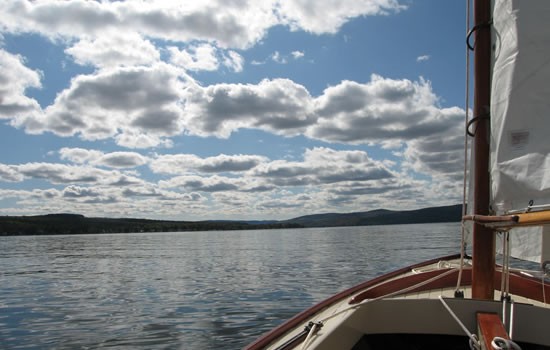― ALGAE BLOOMS ―
What Is Going On?
There have been several reports starting Wednesday 9/13/22 thru this weekend of algal blooms on shorelines of Keuka from Hammondsport to the north end of the east branch and along the west bluff. The blooms look like green paint or stain spilled on the water or in some cases like pea soup against the shore. They could also look like an accumulation of pollen or granules suspended in the water column. The blooms are a naturally occurring phenomenon throughout the Finger Lakes resulting from the current calm and warm conditions. These conditions were preceded by winds and cool nights (which have stirred the water column) and early season storms (which delivered nutrients from runoff). Canandaigua, Seneca and Cayuga have all reported blooms.
Are these blooms hazardous?
These blooms are currently classified by the Dept. of Environmental Conservation (DEC) as suspicious , possibly cyanobacteria, which in high concentrations, can produce irritating toxins. People and pets should avoid the water when blooms are present. Samples of the bloom have been taken and sent for analysis to the College of Environmental Science and Forestry, (ESF).
What is Cyanobacteria?
Cyanobacteria is a unique aquatic bacteria, which obtain their energy through photosynthesis, they are also referred to as blue green algae although they are not a true algae. Cyanobacteria and many algae are native to Keuka and other Finger Lakes in low concentrations. It is not unusual for Cyanobacteria, and possibly other opportunistic organisms, to take advantage of the current ideal conditions to increase and concentrate their populations on our shorelines.
What should I do if I have a bloom on my shoreline?
First, avoid use of water, no swimming etc. until the bloom has dissipated. Keep out pets as well. Watch for any signs of skin irritation or other health issues and report to your physician. You may also report to harmfulalgae@health.ny.gov.
Second, take pictures and email them to HABsInfo@dec.ny.gov and/or info@keukalakeassoc.org. This will help us monitor and assess the on-going blooms. For additional information, call the DEC at 518-402-8179 or KLA at 315-694-7324 or 1-866-369-3781.
Third, if possible, take a sample of the bloom in a clean plastic container or clean zip-lock bag and refrigerate. Contact Cornell Cooperative via email for pick up to send the sample foranalysis. Analysis takes a about a week, but will determine the type of bloom and whether or not it was hazardous.
Finally, thank you so much for supporting the Keuka Lake Association and visiting this website. As always we strive to Preserve and Protect our beautiful Keuka Lake.

